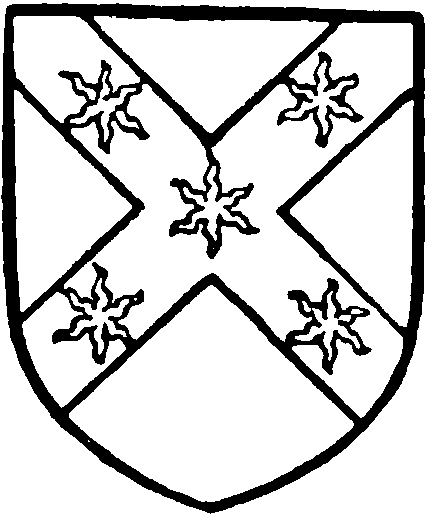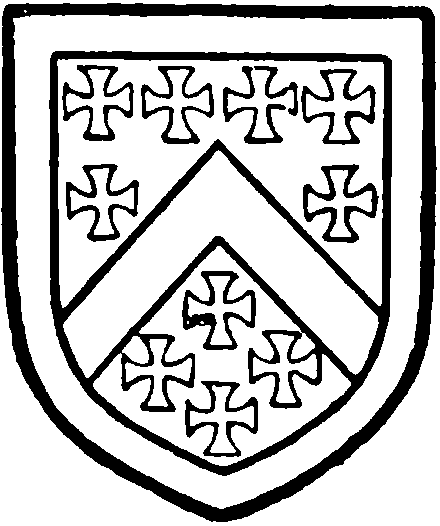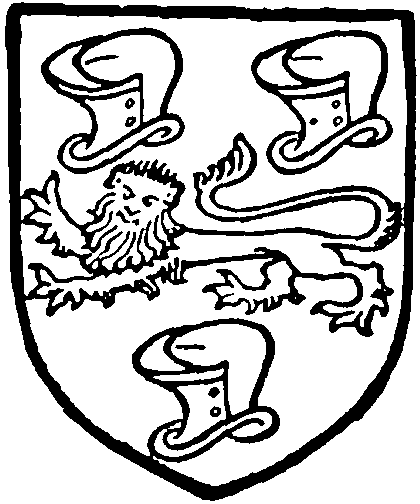A History of the County of Hampshire: Volume 3. Originally published by Victoria County History, London, 1908.
This free content was digitised by double rekeying. All rights reserved.
'Parishes: Exbury', in A History of the County of Hampshire: Volume 3, ed. William Page (London, 1908), British History Online https://prod.british-history.ac.uk/vch/hants/vol3/pp290-291 [accessed 23 April 2025].
'Parishes: Exbury', in A History of the County of Hampshire: Volume 3. Edited by William Page (London, 1908), British History Online, accessed April 23, 2025, https://prod.british-history.ac.uk/vch/hants/vol3/pp290-291.
"Parishes: Exbury". A History of the County of Hampshire: Volume 3. Ed. William Page (London, 1908), British History Online. Web. 23 April 2025. https://prod.british-history.ac.uk/vch/hants/vol3/pp290-291.
In this section
EXBURY
Ekeresbur (xiii cent.); Eukeresbury (xiv cent.).
Exbury parish is a low tract of fertile wooded land in the valley of the Beaulieu River, whose estuary curves round the parish, bounding it west and south, where it meets the Solent. Down the eastern boundary runs the Dark Water, a narrow stream with steep high banks which are covered with trees, heather, and bracken. Of the 2,593 acres of which this parish consists there are 829 of arable land, 683 of permanent grass, and 365 of woods and plantations. (fn. 1) The soil is loam, and the chief crops are wheat and barley. The occupations of the inhabitants of this secluded corner of the country are purely agricultural, and there are less than 300 persons in the whole parish. The only main road enters the parish on the north-west, and runs down to the south coast, and the nearest station is Beaulieu Road in the New Forest, nine miles from Exbury village. The other means of communication are sandy lanes or tracks across the fields, while the steep valley of the Dark Water is a great obstacle to access from the east.
The little village of Exbury stands amid thick trees on the left of the main road from Dibden or Beaulieu. The church on the east, and Exbury manor house on the west, are on the main road, the rest of the village straggling for a little way down a broad lane which turns eastward. Following the road to the coast, Lower Exbury Farm stands high up on the banks of the Beaulieu River, overlooking it as it curves eastward to meet the Solent. Here can be seen the site of the chapel of St. Katherine, the remaining stones of which are now used for pig-styes. This chapel was served by the Cistercians from Beaulieu Abbey, the tradition being that the monks used to cross the river from St. Leonard's, on stepping-stones. The chapel was not pulled down until 1827, when the present chapel at Exbury was built.
Turning westward along the coast we come to Lepe, which now consists of a few cottages and a coast-guard station, though Wise wrote of it in 1866 as 'a fishing village.' Possibly he was referring to the oyster trade, large heaps of oysters being formerly stacked here to purify. Lepe House, once an old inn, has been beautified and enlarged till it is quite unrecognizable. It is now occupied by Mr. H. W. Forster, M.P., lord of the manor of Exbury and Lepe. Both Lepe House and Inchmerry House (the residence of the Dowager Countess De La Warr) command beautiful views facing the Isle of Wight. All this coast district is very liable to floods.
MANORS
There is no record of holders of land in EXBURY previous to the thirteenth century, when there are various traces of the family of Foliot (Faflet, Fallet, or Follet). In 1244 Richard Foliot, a minor, was holding land in Exbury in chief of the crown, (fn. 2) and at the end of the century Walter Foliot held two carucates there by knight's service. (fn. 3) On the death of Robert Foliot his lands were divided between his two daughters and coheirs: Maud, who was possessed of one messuage and one carucate in Exbury and Lepe, which she conveyed in 1304 to Andrew de Grymstead (fn. 4); and Mabel, who apparently married Robert le Gras. (fn. 5) The Grymstead moiety was held by Andrew de Grymstead in 1316. (fn. 6) Andrew died in 1324, (fn. 7) and in 1336 his son John settled it upon Eleanor his wife for life. (fn. 8) Eleanor survived her husband many years, holding her moiety of the manor as part of the inheritance of Reginald Perot, who, in default of male issue of the Grymstead line, had become heir to the property. (fn. 9) On the death of Eleanor, in 1363, a dispute arose. Ralph Perot was a minor, and as tenant-in-chief of the crown the custody of his lands was assumed by the king, who committed it to Robert de Beverley. (fn. 10) John de Bettesthorne, however, claimed that the reversion of this moiety of the manor had been sold to him before the death of John de Grymstead. (fn. 11) This had undoubtedly been the case, and John de Bettesthorne made good his claim. (fn. 12)
With respect to the other moiety of the manor, viz. that which passed to Mabel le Gras, there is an interesting record extant of a covenant between Robert le Gras and his freemen of Exbury in the time of Edward I. (fn. 13) It was then agreed that 'Estwode and Wynesle' should be inclosed; that the men might have common of pasture for their animals all the year round, with litter for these animals in the whole demesne of Exbury outside the inclosures; and that any of Robert's men convicted in his courts should be assessed by their peers and not otherwise. Six marks were payable to Robert for damages, and, in the event of any infraction of the agreement, £60 should be paid to the queen. This second moiety of the manor was held by Mabel le Gras in 1316, (fn. 14) after which it passed through various hands (fn. 15) until finally purchased by John de Bettesthorne in 1381. (fn. 16) The descent of the two holdings is henceforward the same.

Bettesthorne. Argent a saltire gules with five stars or thereon.

Berkeley. Gules a cheveron between ten crosses formy argent with the difference of a border argent.
On the death of John de Bettesthorne in 1399 his inheritance passed to his daughter Elizabeth and her husband Sir John de Berkeley, knt. (fn. 17) It remained in the hands of the Berkeley family throughout the greater part of the fifteenth century. (fn. 18) In 1484 the entire estates of Sir William Berkeley were handed over by the king to John Hoton, esquire of the body, 'for his good service against the rebels. (fn. 19) This grant was apparently only temporary, for in 1489 a dispute was in process between the relatives of the late Sir William Berkeley over his lands. (fn. 20) The manor was recovered by Sir William's sister Katherine and her husband John Brewerton, (fn. 21) and thence descended to the Comptons of Compton Wyniates, Warwickshire, (fn. 22) who held it for the next two hundred years. (fn. 23) In 1718 Henry Compton and his wife Eleanor conveyed the manor to William Mitford, (fn. 24) whence it descended to his grandson William Mitford the historian of Greece. (fn. 25) On the latter's death, in 1827, his grandson Henry Reveley Mitford succeeded to the property. (fn. 26) He sold it, in the early eighties, to Major John Forster, whose son, Mr. Henry William Forster, is the present lord of the manor.
It is possible that the moiety which fell to Mabel le Gras in the fourteenth century became a separate manor of LEPE (Lupe, Hupe, Lehupe, Lope, Leope, xiv cent.; Leepe, xv cent.; Leape, xvii. cent.), and that the two manors were kept separate even after they had passed into the same hands. It seems, however, more probable that the division in the fourteenth century was one of land only, and that only one court was held, the manor being frequently called the 'manor of Exbury and Lepe.'

Compton. Sable a leopard or between three helms argent.
CHURCH
The church, of no known dedication, consecrated in 1827, is a rectangular building of yellow brick, with three round-headed windows on the north and two on the south, the middle of the south wall having been formerly occupied by a 'three-decker' pulpit. It has a west gallery and bell-turret, and a flat plaster ceiling, and is entered from the west. Its builder was William Mitford the historian, and to the east of the church is the family vault of the Mitfords.
The font is of Purbeck marble, c. 1200, with a shallow square bowl with chamfered angles, and probably cut down. It stands on a circular shaft, and probably had formerly four angle columns.
In the bell-turret is a small bell, uninscribed.
The plate consists of a communion cup of rather unusual type, c. 1600, with a band of ornament on the lip, a curved base to the bowl, and a trumpetshaped stem; a paten of 1902, its ornament copied from the cup; and a plated flagon and almsdish. The register dates from 1756.
ADVOWSON
Exbury was a chapelry of Fawley until 1863. The earliest mention of the chapel is in 1291, when 'Master Nicholas de Audeby' held the church of Fawley with the chapel of Exbury. (fn. 27) The next reference is in 1494. (fn. 28) In 1863 Exbury was separated from Fawley, the curate-in charge becoming rector, while the living remained in the gift of the bishop of the diocese. In 1840 there was an agreement for the commutation of tithes, in which document Exbury is distinctly spoken of as a parish. (fn. 29) There are no dissenting chapels in this parish.